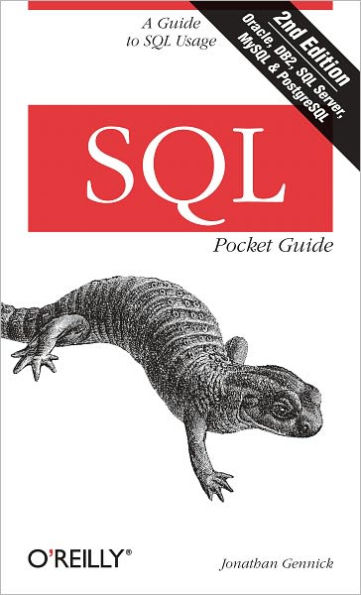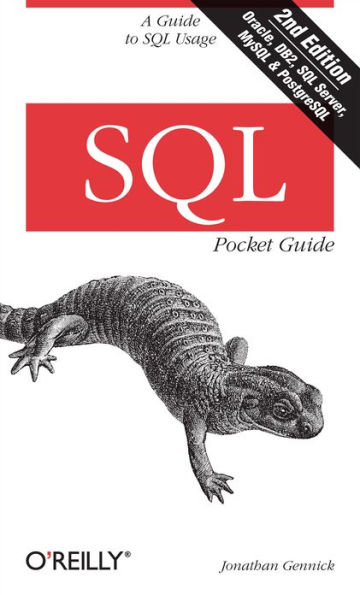SQL is the language of databases. It's used to create and maintain database objects, place data into those objects, query the data, modify the data, and, finally, delete data that is no longer needed. Databases lie at the heart of many, if not most business applications. Chances are very good that if you're involved with software development, you're using SQL to some degree. And if you're using SQL, you should own a good reference or two.
Now available in an updated second edition, our very popular SQL Pocket Guide is a major help to programmers, database administrators, and everyone who uses SQL in their day-to-day work. The SQL Pocket Guide is a concise reference to frequently used SQL statements and commonly used SQL functions. Not just an endless collection of syntax diagrams, this portable guide addresses the language's complexity head on and leads by example. The information in this edition has been updated to reflect the latest versions of the most commonly used SQL variants including:
- Oracle Database 10g, Release 2 (includingthe free Oracle Database 10g Express Edition (XE))
- Microsoft SQL Server 2005
- MySQL 5
- IBM DB2 8.2
- PostreSQL 8.1 database
SQL is the language of databases. It's used to create and maintain database objects, place data into those objects, query the data, modify the data, and, finally, delete data that is no longer needed. Databases lie at the heart of many, if not most business applications. Chances are very good that if you're involved with software development, you're using SQL to some degree. And if you're using SQL, you should own a good reference or two.
Now available in an updated second edition, our very popular SQL Pocket Guide is a major help to programmers, database administrators, and everyone who uses SQL in their day-to-day work. The SQL Pocket Guide is a concise reference to frequently used SQL statements and commonly used SQL functions. Not just an endless collection of syntax diagrams, this portable guide addresses the language's complexity head on and leads by example. The information in this edition has been updated to reflect the latest versions of the most commonly used SQL variants including:
- Oracle Database 10g, Release 2 (includingthe free Oracle Database 10g Express Edition (XE))
- Microsoft SQL Server 2005
- MySQL 5
- IBM DB2 8.2
- PostreSQL 8.1 database

SQL Pocket Guide
192
SQL Pocket Guide
192
Product Details
| ISBN-13: | 9780596554538 |
|---|---|
| Publisher: | O'Reilly Media, Incorporated |
| Publication date: | 04/17/2006 |
| Series: | Pocket Reference (O'Reilly) |
| Sold by: | Barnes & Noble |
| Format: | eBook |
| Pages: | 192 |
| File size: | 4 MB |



